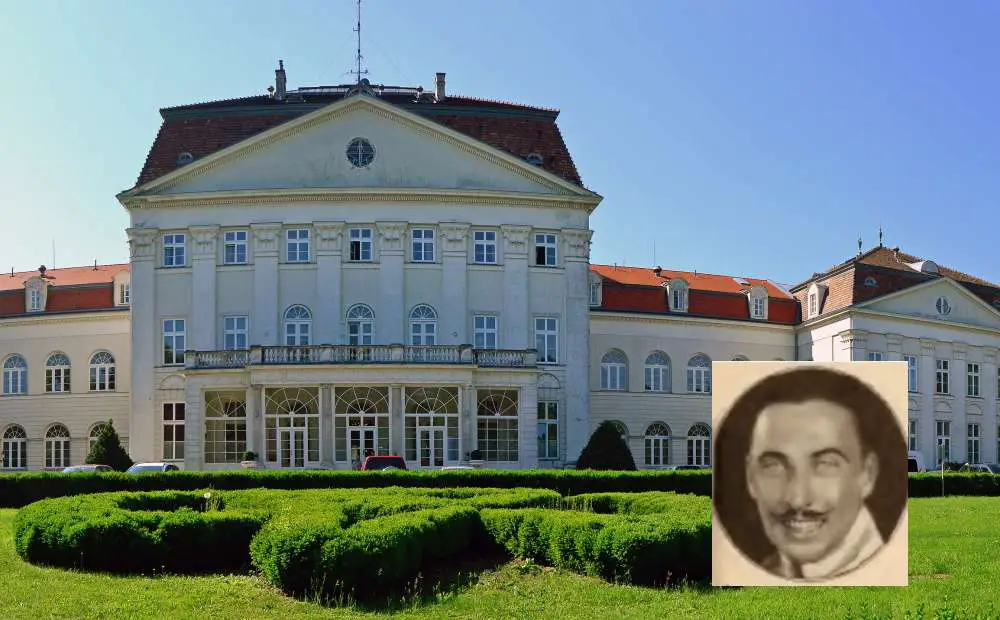Archduke Leopold of Austria, Prince of Tuscany, spent most of his life in exile trying to chase down money — at least when he wasn’t at a costume ball in Greenwich, Conn., or getting arrested for drunk driving in Boston.
He was a Habsburg, a family that ruled Europe for a thousand years. At one point in his life he was first in line as a Pretender to the Throne of Spain on the Carlist branch. The grand-nephew of Emperor Franz Joseph, he stood in the line of succession to the British throne. Pretty low down – 300th at birth, then he fell further. But still.
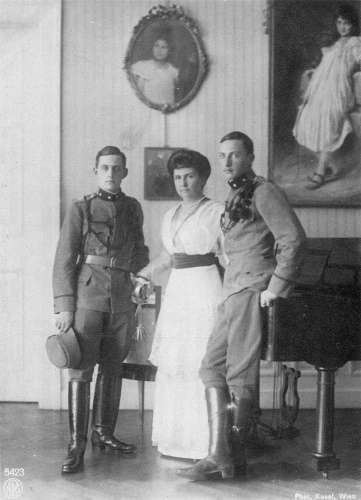
Archduke Leopold, right, with his brother Rainer and mother Blanca.
The archduke didn’t time his birth well, though. He arrived just before the old European order collapsed in the aftermath of World War I.
Leopold for decades tried to trade on his Habsburg name and get his hands on Habsburg money. He also aimed for Hollywood gold. At one point his quest for easy money landed him in a New York City jail, charged with grand larceny.
In the end, Archduke Leopold went to work for a living in a factory in Willimantic, Conn.
Archduke Leopold of Austria
He was born January 20, 1897 in Zagreb, Croatia, the second son of Archduke Leopold Salvator and Infanta Blanca of Spain. He had nine siblings, but his mother had 80 servants to help with all those kids.
Leopold grew up in luxurious surroundings. His parents owned the Palais Toskana in Vienna, Schloss Wilhelminenberg in the Austrian countryside, a villa in Italy and a castle in Lower Austria. His father had a scientific bent, and patented a number of military inventions. Later on, those patents would throw off money when the Habsburg bank account wouldn’t.
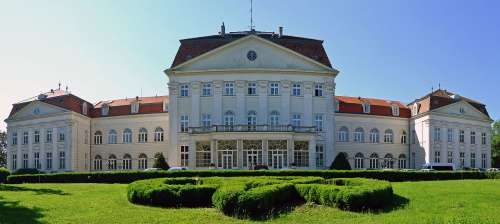
Schloss Wilhelminenberg
During World War I, Archduke Leopold fought along with his older brother, Rainier, Both served as lieutenants of artillery in the Austro-Hungarian Army. At 19, Leopold distinguished himself in the Battle of Medeazza. Great-Uncle Franz Joseph I of Austria, awarded him the Order of the Golden Fleece.
Then everything went downhill.
Fall of the Austrian Monarchy
Austria, of course, lost World War I, and the monarchy fell. Leopold and Rainer decided to stay in Vienna and recognize the Republic, relinquishing their titles. But “archduke” made newspaper fodder, and they would always be known as such.
The Austrian government seized their Vienna home, the Palais Toskana, and subdivided it into apartments. Rainer and Leopold were allowed to live there.
The rest of the family fled to Barcelona, where they lived in a tiny house. The boys slept with their father in one bedroom, the girls with their mother in another.
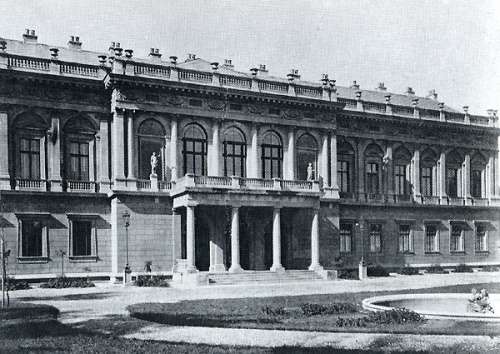
Palais Toskana
In Vienna, Rainer ran a garage. Leopold went to work delivering films to theaters on a three-wheeled motorcycle. In 1925, police arrested him for running over a pedestrian. He then made the news as a police item when the New York Times reported his court appearance on April 2.
He told the court he couldn’t pay the $3 fine because he only earned $10 a month. On appeal, two workmen (probably monarchists) said the pedestrian caused the accident. Archduke Leopold didn’t have to pay the fine, but he did have to suffer the indignity of being described as an errand boy in print.
The Times also noted he had a wife and children to support. Actually, he had one daughter after his marriage in 1919 to the Baroness Dagmar Nicolics-Podrinska, a minor Croatian noble.
Film Career
In January 1927, the New York Times sent one of its correspondents to find Leopold in Vienna. The reporter described the obscurity into which the Habsburgs had fallen. He found Rainer in his Palais Toskana apartment, “a degenerated palace” with corridors filled with old furniture. Leopold had an address in a middle-class flat, but he had sailed for America. His wife and daughter stayed behind in Austria.
Archduke Leopold landed in Hollywood. He told the Times in the summer of 1927 that he wanted to earn enough money as an actor to return to Austria. His motive was revenge: Count Laszlo Szechneyi had insulted him.
While the archduke acted, his secretary, Alfred Neuhardt, mopped his brow for him as he perspired under the lights. Leopold apparently had difficulty playing a German officer because he couldn’t salute. He explained that he never had to salute anyone in Austria, everyone saluted him.
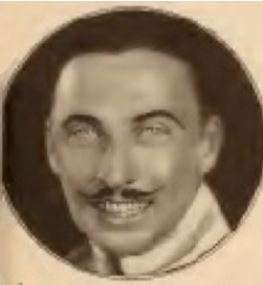
The original caption to this photo read, “Hollywood predicts that Leopold will soon become an idol in Filmdom.”
His film career went nowhere after he played two bit parts, one in a film by John Ford. Director Eric von Stroheim used him as an uncredited actor and technical advisor on The Wedding March. Shortly before leaving Hollywood, Leopold told Photoplay,
Hollywood is a Fata Morgana—a mirage—which lures thousands to walk its streets, although only a very few reach the lucky oasis.
Back on the East Coast
Shortly after the New Year in 1928, the Times found Leopold in Greenwich, Conn., where his friends, Mr. and Mrs. W.H. Stumpfel, held a fancy costume ball in his honor. He continued to make the social pages at luncheons, parties and the racetrack. In 1928, the Times mentioned him along with Charles Lindbergh as attending an international polo match on Long Island.
Hungarian Prince
His fortunes seemed to brighten in 1929, when the Hungarian legation in Washington, D.C., declared him a citizen and a Hungarian royal prince. But the honor didn’t seem to help his finances. The next month his tailor sued him in Vienna for failing to pay him $1,000 for day and evening clothes.
Then a few days later he made the papers again. At a dinner before the Beaux Arts Ball in New York, he got into a fight with Julius Fleischman Holmes, a wealthy sportsman, over Mrs. Holmes.
In August of 1929, he told the New York Times he expected to ride in a steeplechase in Belmont Park.
Grand Larceny
In early 1930, Archduke Leopold lived at a fashionable Sutton Place address in New York City. He shared an office with a real estate agent, Stefan de Pomierski, a Polish count he met at a party. However, as the archduke later told police, he didn’t have an occupation.
In March, he received a subpoena in connection with the theft of the Napoleon Diamond Necklace, which belonged to his great aunt, Archduchess Maria Theresa.
It was all a misunderstanding, Leopold insisted.
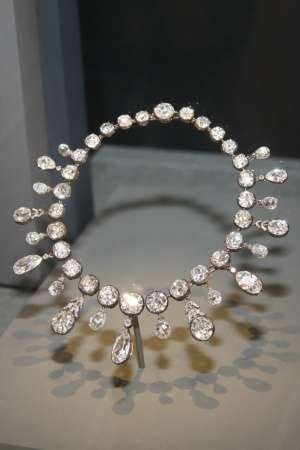
Napoleon Diamond Necklace, now in the Smithsonian Natural History Museum
Aunt Maria-Theresa had shipped the jewels to the United States from Vienna. She gave power of attorney to sell them to a man who called himself Col. Charles Townsend. Townsend posed as a British secret service agent, his wife as an Italian princess. They weren’t.
Maria-Theresa wanted no less than $400,000 for the necklace, which had 47 diamonds. It also had historic value, as Napoleon Bonaparte gave it to his wife, Marie-Louisa, on the birth of their son in 1811.
Townsend tried to sell it for what Maria-Theresa wanted, but he couldn’t because the stock market had crashed. Maria-Theresa then withdrew the power of attorney from him. Townsend sold the Napoleon Diamond Necklace anyway, for $60,000, to a West Side jeweler.
Leopold claimed he had only witnessed the transaction, though later it turned out he had pocketed $20,000 for his role in making the sale. The Townsends skipped town, after sending the archduchess a check for $7,270. The rest of the $60,000 sale price went for expenses, they said.
Two Counts
The district attorney charged Leopold with aiding and abetting the theft, and stealing the proceeds of the sale. Leopold pleaded not guilty on both counts.
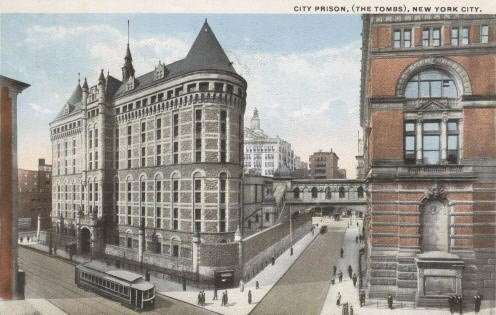
The Tombs
He wanted a speedy trial, he said, because he had to return to Austria to restore the monarchy. Thinking he might hasten matters by volunteering to go to jail, he didn’t post bail and ended up in Manhattan’s notorious Tombs prison. He lasted 12 days. During his incarceration, though, local newspapers noted a visit by a well-dressed woman named Alicia Coburn, his Sutton Place neighbor.
In November, a jury acquitted him on the first count, and the second count was later vacated.
Archduke Leopold Back In Vienna
By May 1931 he returned to Austria—illegally. He arrived “to seek the help of church dignitaries in obtaining a dispensation from Pope Pius XI, which would enable him to marry Mrs. Alicia Coburn of Canada.” Dispensation or not, he announced he would marry Alicia Condon in Paris. He returned to Vienna in the fall to attend his father’s funeral.
He was still in Vienna in January 1932, when he wore his Order of the Golden Fleece medal with a sports jacket in Charly’s Bar. That annoyed a young Bavarian count, Max Arco, because a Habsburg only wore the medal around the neck with ceremonial clothes. The count called the archduke a swine. Leopold left with his party, but Arco sent a waiter after him with a card challenging him to a duel. Leopold apparently ignored him.
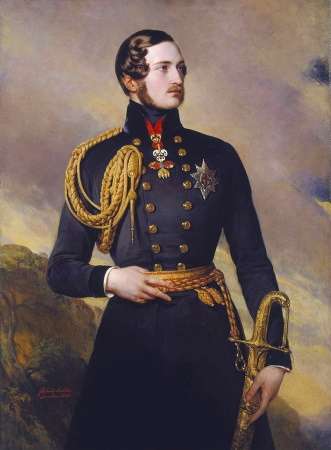
Prince Albert wearing the Spanish Order of the Golden Fleece in 1842—the proper way.
By 1933 he and Alicia had moved to Marblehead, Mass. His brothers in exile also found new homes in New England. Archduke Franz Joseph would move to Franconia, N.H., and work as a forester. Archduke Anton and his wife Ileana would move to Newton, Mass.
In the spring of 1933, Boston police arrested him for drunk driving. He said he had only been drinking 3.2 beer, then he missed his court date.
Vienna Again
In June 1937, the Archduke Leopold went back to court, this time in Vienna. The Times reported that he brought the charges this time. He asked the court to order his mother to increase his monthly allowance to $400 from $150. It was simply impossible for an archduke to live on $150, he said.
His mother countered that he was living rent-free in a luxury apartment in Toskana Place. He’d also received a large sum of money recently, she said, and he’d gone right through it.
The judge sided with his mother. He told Leopold that just because he ran through all his money, his mother didn’t have to make him whole. Case dismissed.
Habsburg Fund
When World War II broke out in Europe, Archduke Leopold left the continent and settled in South Coventry, Conn. In June 1941, he sued his fifth cousin, Archduke Otto, then living in a New York City hotel. Leopold tried to make Otto pay him for what he called his share of the income from the House of Habsburg-Lorraine.
Maria-Theresa, the one with the necklace, in 1780 had set up the Hapsburg Fund, which Leopold valued at $120 million. Later he upped his estimate, claiming the fund was worth $200 million. Otto, the claimant to the Austrian throne, scoffed at those figures.
In the lawsuit, Leopold said Otto got cash and jewels from the fund. Otto said most of the money had gone. He also said he had no obligation to “contribute to the support of a fifth cousin, whom I have never seen, merely because my ancestors, out of their generosity, provided for his ancestors.”
Willimantic
From then on, Leopold sank into obscurity. He became a U.S. citizen in 1953, calling himself Leopold H. Lorraine. He moved to a small house in Willimantic, Conn., and went to work in a factory. Leopold and Alicia divorced, but remained friends.
He inherited some money in 1955, but continued to live modestly in Connecticut. The former Archduke Leopold died in 1958 of cancer, his former wife Alicia at his deathbed.
Images: Schloss Wilhelminenberg By HeinzLW – Own work, CC BY-SA 3.0 at, https://commons.wikimedia.org/w/index.php?curid=21369674. Napoleon Diamond Necklace By Cliff from Arlington, VA (Outside Washington DC), USA – IMG_1704, CC BY 2.0, https://commons.wikimedia.org/w/index.php?curid=5024548. With thanks to the New York Times archives. This story last updated in 2023.
